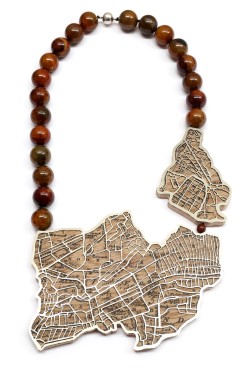Mária Hriešik Nepšinská
The image of a jewel as a decorative artefact made exclusively of expensive materials – metal and precious stones – began to change from around the mid-20th century, influenced by the progressive movement of Western European artists who brought a growing dose of individualism and artistic quality to the matter. They succeeded in extracting jewellery from the narrow sphere of the gold-making craft which had been relatively negatively marked by serial production. Instead, they fixed their attention on alternative materials which had until then been unthinkable in the world of jewellery: plastic, paper, textile and various organic materials. Jewellery-makers welcomes the opportunity to choose freely a material matching their artistic feeling, which had the power to highlight the work’s symbolic or semantic meaning. The driving force behind this newly-formed artistic activity based on an artist’s craft work was – alongside a strong desire to go against tradition – the courage to experiment. Many contemporary artists have an approach to material that comes from within. The author describes the work of Terhi Tolvanen, Ketli Tiitsar, Francis Willemstijn, Jorge Castañón, Flóra Vági and Manuel Vilhena.
